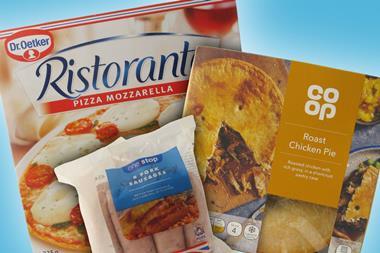A new wave of calorie reduction targets comes amid what one supplier describes as a “tsunami” of regulation and voluntary targets
A new wave of calorie reduction targets affecting products including pizzas, pies and ready meals, revealed by The Grocer last week, comes amid what one supplier describes as a “tsunami” of regulation and voluntary targets.
So is it just desserts for an industry making millions selling HFSS food, or an ill-thought-through recipe for failure?
The FDF actually welcomed PHE’s latest crackdown, a voluntary set of calorie reduction targets, when it first revealed plans in March. The aim to slash the count in the most calorie-laden sectors by 20% by 2024 was, after all, a return to a focus on overall calories, after years of obsession over sugar.
But when talks got down to the nitty gritty last week, the backlash didn’t take long.
Under the plans, pies, pizzas and sausages have all been all hit with what sources describe as “draconian” targets.
In just one example, PHE wants three-quarters of all pizzas to shrink to below 210 calories per 100g, a figure that would exclude all of the top 10 bestselling pizzas by volume.
But Pasta and Italian Food Association Committee member Richard Harrow says PHE failed to explain how, if manufacturers resort to shrinking their products, it will stop consumers simply ordering more than one.
Harrow also claims PHE was not forthcoming when asked if the government planned to ramp up its spending on public health, given it now puts obesity on a par with smoking.
“If the government believes this is now on a par with smoking then it should be spending money on a massive public health campaign,” says Harrow. “Not leaving it to the industry.”
“We are getting to the same sort of stage where companies walked away from the Responsibility Deal [of 2011] because they were fed up with the lack of support and the constant criticism, with no backing from the DH,” says one industry source, who claims there are “serious discussions at board level” about the possibility of companies taking a more confrontational approach to government unless it backs off.
“There has to be a more joined-up partnership with industry and PHE”
Even health campaigners wonder if the industry is being swamped with too many targets, with the latest coming fewer than six months after PHE’s first year of data on its sugar reduction programme, showing companies had failed to hit the 5% reduction target.
“When PHE told industry it wanted to cut sugar by 20% by 2020 they didn’t consider how difficult it is to do,” says Tam Fry, spokesman for the National Obesity Forum. “Only 2% achieved it in the first year.
“The industry is in a completely different mindset than it was eight years ago when we had the Responsibility Deal. It is prepared to do the right thing in tackling obesity but there has to be a more joined-up partnership with PHE.”
Instead, much more is coming down the pipeline, including PHE’s delayed review of the Nutrient Profile Model. Companies fear cereals, fruit juice and yoghurts face being “demonised” by the review and banned from in-store and TV promotions.
Read more: PHE ‘risks demonising food with junk classification change’
The Department of Health is due to release within days a consultation over sweeping plans for a crackdown on HFSS promotions in stores, first mooted under the Childhood Obesity Plan Part 2.
Meanwhile industry sources suggest it is “also inevitable” any move for a broad ban on HFSS promotions will face a legal challenge, either from the FDF or the very companies the government is relying on to achieve voluntary reformulation targets.
And if that were not chaotic enough, there is the prospect of the Scottish government doing its own thing. This month it proposed restrictions on PoS promotions and end-of-aisle placement for confectionery, biscuits, crisps, savoury snacks, cakes, pastries, puddings, and soft drinks - the same goods facing reformulation under the cross-border PHE-led sugar reduction programme.
And all the while obesity figures are getting worse. Last week PHE published data from the National Child Measurement Programme, showing the rate of severe obesity in 10 to 11-year-olds had increased by more than a third since 2006/07 to 4.2%, its highest ever. In Whitehall, there are already rumours of an Obesity Plan Part 3.
But with the clock on the obesity time-bomb ticking, can the government show the insight and co-ordination needed to diffuse it?



















1 Readers' comment